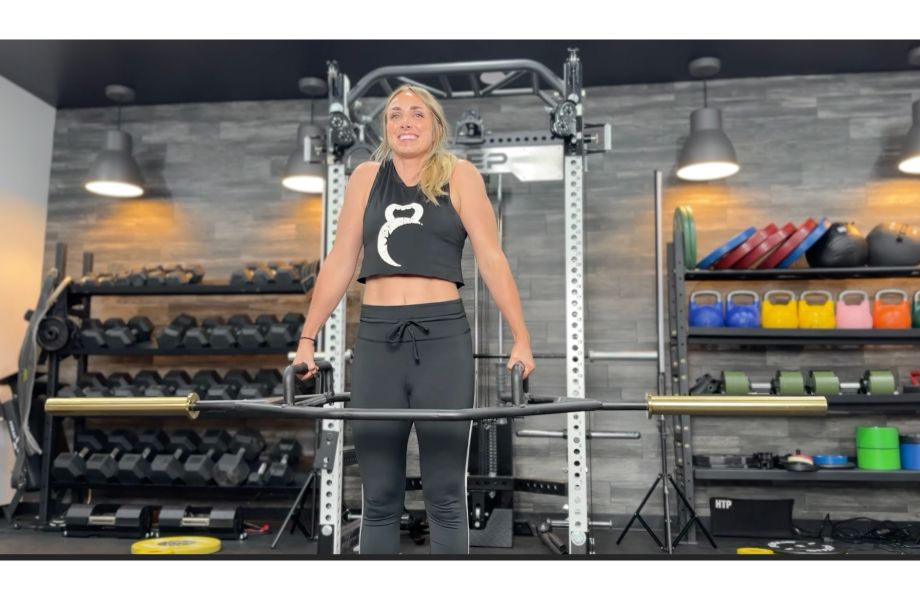We test and review fitness products based on an independent, multi-point methodology. If you use our links to purchase something, we may earn a commission. Read our disclosures.
Do you feel trapped in the same tired workout routine? We’d never disparage the classic weightlifting exercises like the bench press, deadlift, or back squat, nor would we side-eye bodyweight staples like push-ups, pull-ups, and triceps dips.
These movements are popular for a reason, and it’s not because they don’t work; but when was the last time you paid special attention to your traps?
If you just answered our question with a shrug of your shoulders, then you’re either making a clever joke or you’re long overdue for some TLC up top.
Your trapezius muscle is an important one, not only for enhancing athletic abilities, but for facilitating everyday activities and supporting an overall healthy lifestyle. That’s why we’ve put together this list of the best trap exercises available. Working these into your next upper body strength session is bound to work wonders for your overall fitness.
So, what are you waiting for? Let’s dive in!
RELATED: A Trainer-Made Kettlebell Trap Workout
Your Trap Muscles Explained
According to StatPearls1, the trapezius muscle is a large, trapezoid-shaped muscle that spans across your shoulders and upper back, traveling down along the spine until it terminates in the mid back region.
Because of its size, the muscle is segmented into three distinct regions:
- The upper traps, or superior trapezius
- The middle traps, or transverse trapezius
- The lower traps, or inferior trapezius
“The traps primarily act to stabilize your posture,” says GGR Head of Content and certified personal trainer Kate Meier. “They provide support to the neck, spine, and shoulders, but they’re also responsible for various movements, including turning your head, bending your neck, raising and lowering your shoulders, retraction and adduction of the shoulder blades, and lifting, pulling, and rotating the arms.”
How to Target the Traps
If you’re going to target and strengthen the trapezius muscle, you’ll have to perform movements that involve your upper back and shoulders, including adjacent muscle groups like the latissimus dorsi, rhomboids major and minor, and levator scapulae.
The humble shrug is a tried-and-true way to target the traps, while front and lateral raises, rows, and properly-angled pulls will provide activation in this region as well.
Carrying heavy loads, whether we’re talking about a loaded barbell on your shoulders or two heavy free weights held at your sides, will activate the trapezius muscle as well.
RELATED: Try This Lat Workout
Best Trap Exercises
Without further ado, the best trap exercises to tack onto your next upper body sesh!
Barbell Shrugs
Why it’s great: Barbell shrugs are ostensibly the best exercise to isolate the trapezius. The range of motion is minimal, so it’s often added to the end of a shoulder or back workout as a great finisher.
How to do it:
- Load a barbell, then hold it in front of your body while standing with your feet shoulder-width apart. You want a tall torso, neutral neck, and tight core.
- Lift your shoulders up to your ears.
- Relax, returning to the starting position.
- Repeat as needed.
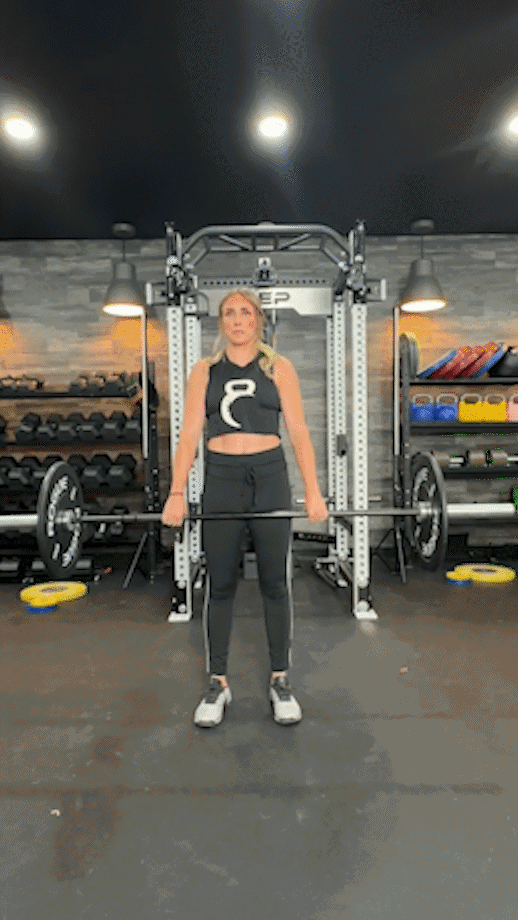
Trap Bar Shrugs
Why it’s great: Trap bar shrugs are very similar to your standard barbell shrug. However, the trap bar’s hexagonal shape allows you to stand inside, providing you a stronger base since you don’t have a heavy barbell pulling you forward while you get in your reps.
How to do it:
- Load and hold a trap bar from a standing position.
- Raise your shoulders to your ears.
- Relax, returning to the starting position.
- Repeat as needed.
RELATED: The Best Trap Bars
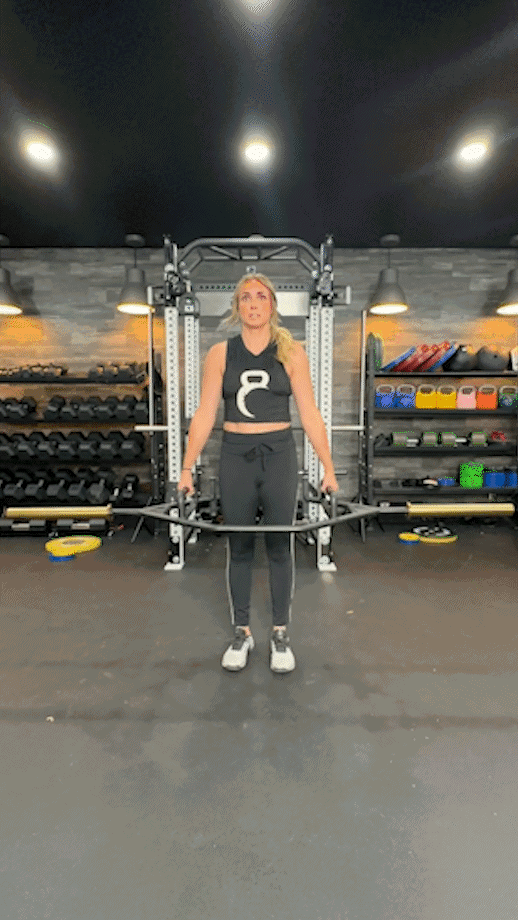
Dumbbell Shrug
Why it’s great: Dumbbells make shrugs very versatile. You’re able to shrug while holding the best dumbbells in front of your body, like a regular barbell shrug, or with your arms at your sides, like a trap bar shrug.
How to do it:
- Grab a pair of dumbbells and hold them either in front of your body with an overhand grip (palms facing the body) or at your sides with a neutral grip (palms facing each other). You want a tall torso, neutral neck, and tight core.
- Raise your shoulders to your ears.
- Relax, returning to the starting position.
- Repeat as needed.
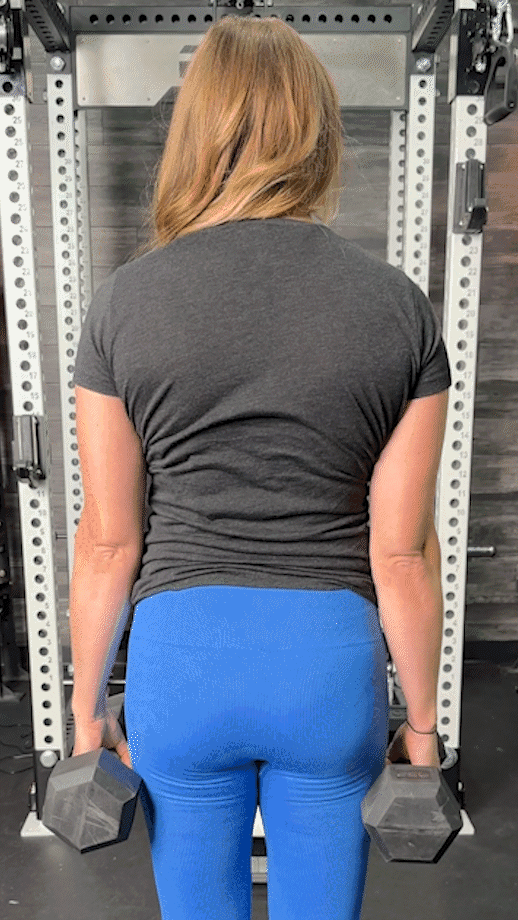
Upright Row
Why it’s great: The upright row mostly hits your trapezius muscles and side deltoids, making it a great inclusion to this workout. The exercise can also be performed with a barbell, dumbbell, or kettlebell.
How to do it:
- Stand while holding a free weight with a narrow grip in front of your body. For our purposes, we’ll use a barbell.
- Holding the core tight, pull the barbell up to neck height, leading with the elbows.
- Control the bar’s descent back to the starting position.
- Repeat as needed.
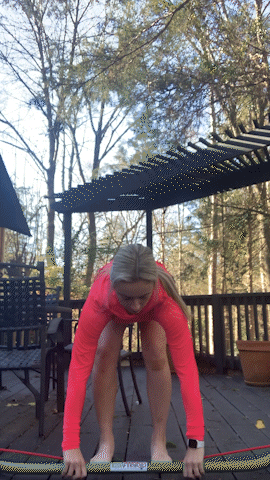
Power Cleans
Why it’s great: Power cleans aren’t just for stronger traps. They provide activation throughout the entire body, helping build muscle, strength, and explosive power. It’s an all-around excellent, albeit technical, compound exercise.
How to do it:
- Stand with a loaded barbell at your feet.
- Push your hips back and bend your knees to grip the barbell, maintaining a flat back and strong core.
- Explosively drive from the heels, push the hips forward, and pull the barbell up simultaneously. As it reaches approximately chest height, bring your elbows forward and underneath the barbell to “catch” it in the front rack position.
- Lower the barbell down from the front rack position, slowly returning it to the floor.
- Repeat as needed.
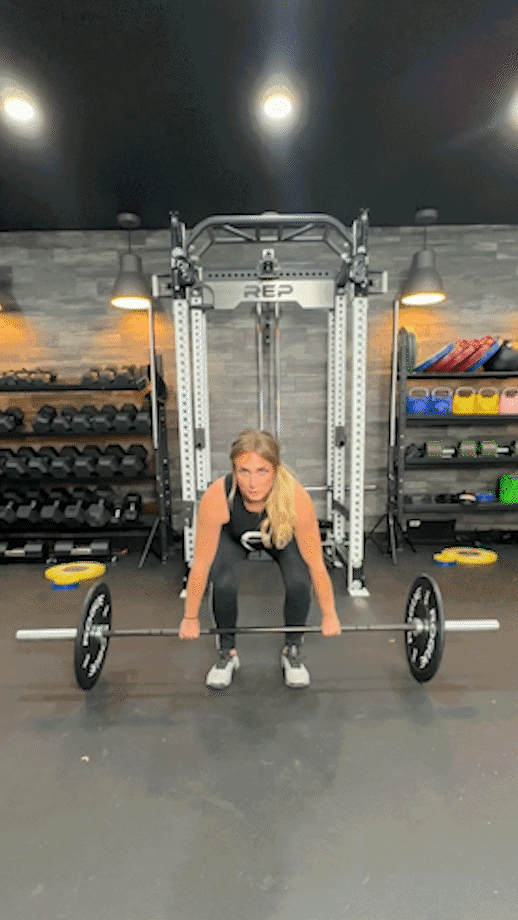
Snatch Grip High Pulls
Why it’s great: Like the upright row or barbell high row, the high pull provides excellent activation of the trapezius and other upper back muscles. Using the snatch grip, an inherently wide grip, increases this activation big time.
How to do it:
- Stand while holding a barbell with a very wide grip in front of your body.
- Holding the core tight, pull the barbell up to neck height.
- Control the bar’s descent back to the starting position.
- Repeat as needed.
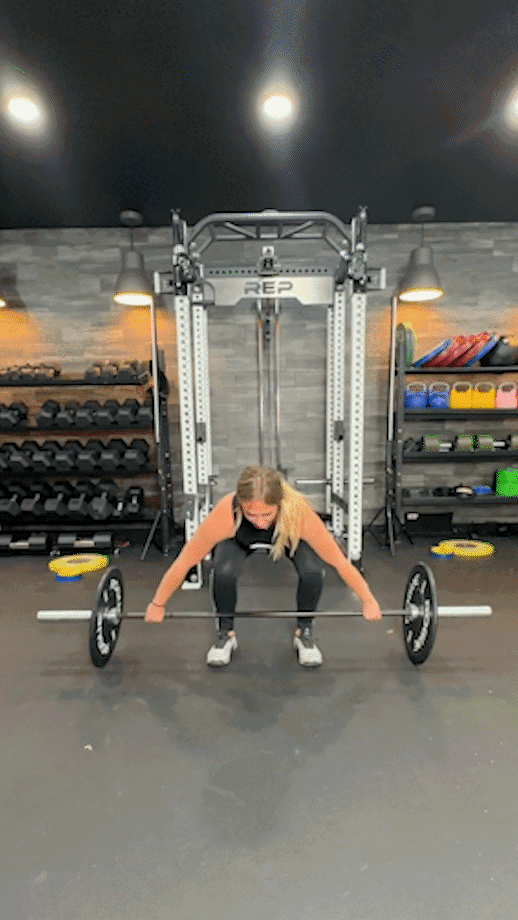
Farmer’s Carry
Why it’s great: Also called the “farmer’s walk,” this classic strongman exercise only really hits the biceps, triceps, forearms, shoulders, upper back, trapezius, quadriceps, hamstrings, calves, lower back, obliques, transverse abdominis, and rectus abdominis. Just those select few muscles. That’s all.
How to do it:
- The farmer’s carry works with various free weights, but we’ll use dumbbells. Select your dumbbells and place one on either side of your body on the floor.
- Bend down and deadlift the weights so you are in a standing position holding them at your sides. Keep your shoulder blades down and back, your neck neutral, your core tight, and your back flat.
- Slowly start walking, taking deliberate steps.
- Walk for the desired distance or duration.
- Place down the weights and rest, then repeat as needed.
RELATED: Farmers’ Walk Benefits
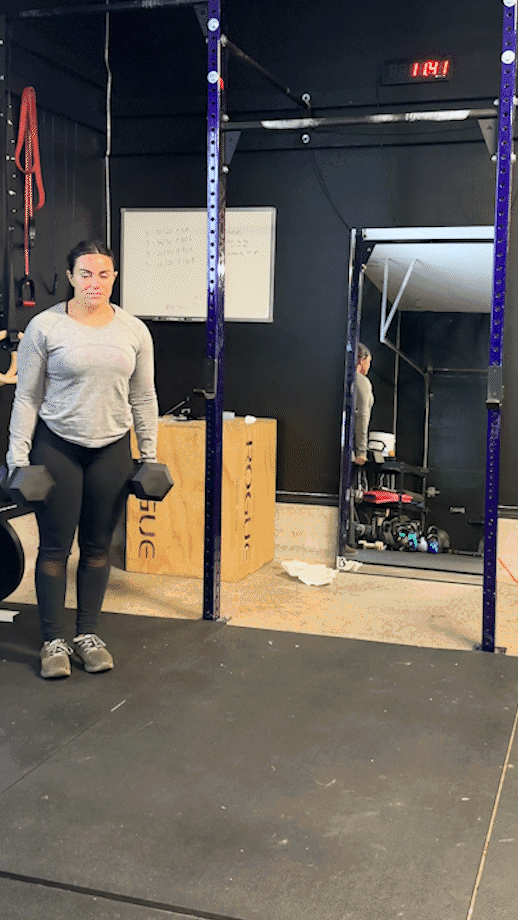
Bent-Over Row
Why it’s great: The bent-over barbell row is a staple in most back workouts, activating the lats, rhomboids, posterior delts, and, of course, the middle and lower trapezius muscles.
How to do it:
- Stand, holding a loaded barbell, and shift the hips back, lowering your chest toward the floor. Your knees should be slightly bent and your arms fully extended toward the floor.
- Keeping the core engaged, pull the barbell to the chest and retract the shoulder blades.
- Squeeze your traps and back muscles at the top of the movement.
- Control the bar’s descent.
- Repeat as needed.
RELATED: The Best Bent-Over Row Alternatives
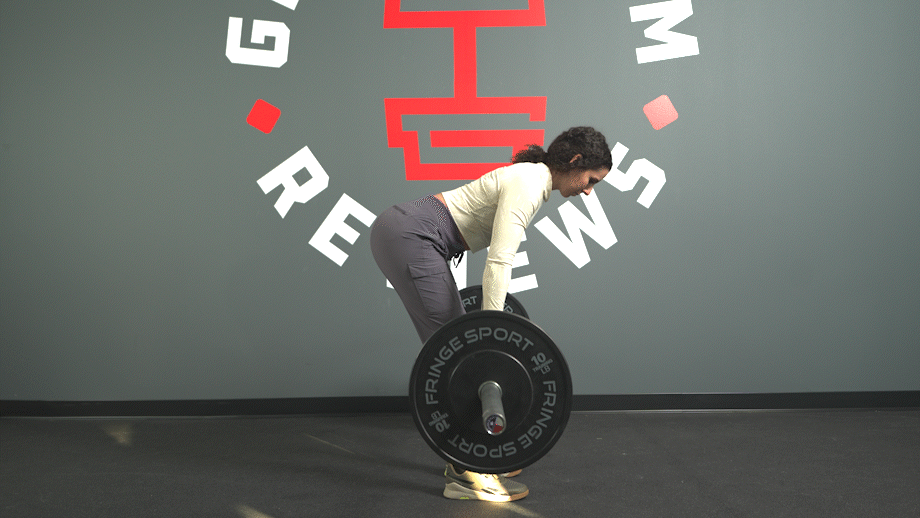
Dumbbell Prone Y-Raise
Why it’s great: By using an incline bench to enter the prone position, you don’t need to recruit as many stabilizing muscles from adjacent muscle groups to maintain good posture. That means you can really focus on what matters: the upper body and trapezius muscle.
How to do it:
- Select your dumbbells, set a bench to an incline, and sit with your chest against the back support pad and a dumbbell in either hand. Let your arms dangle down towards the floor.
- With arms mostly straight, save for a slight bend in the elbow, raise them over your head to form the letter Y with your body.
- Squeeze your traps at the top of the movement, then return to the starting position.
- Repeat as needed.
RELATED: Back Workout With Dumbbells
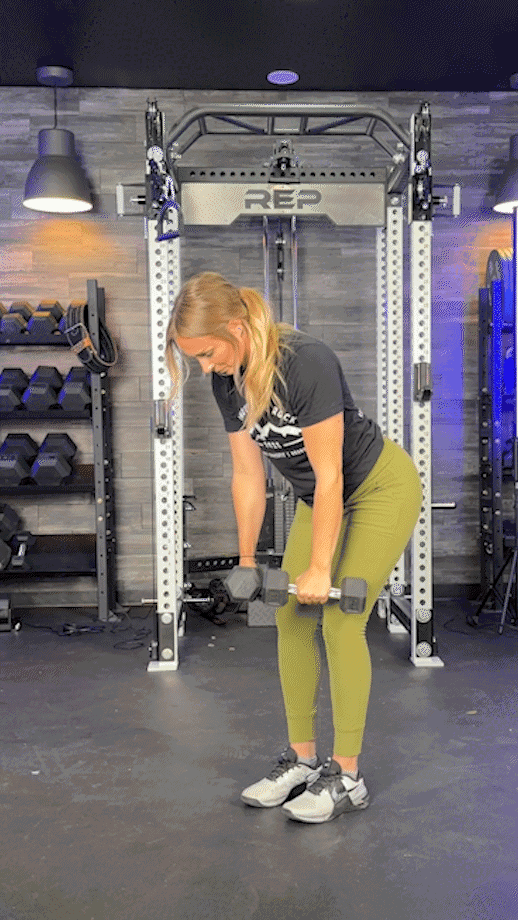
Dumbbell Reverse Fly
Why it’s great: Similar to the dumbbell Y-raise, dumbbell reverse flyes hit the traps, upper back, rear delts, and rhomboids. Since you’re standing again for this one, you’ll resume using other muscle groups from your lower body and core to stabilize.
How to do it:
- Bend forward by bringing the hips back, keeping your core tight to protect your lower back. Hold a dumbbell in each hand and bend your elbows slightly.
- Pull the arms up and out, pinching the shoulder blades together.
- Slowly return to the starting position.
- Repeat as needed.
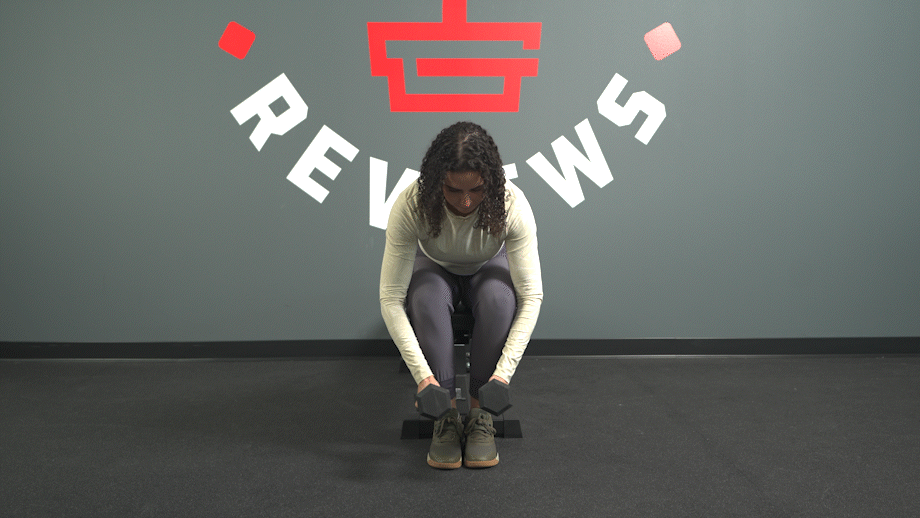
Dumbbell Lateral Raise
Why it’s great: Lateral raises are super good at isolating the shoulders, helping fuel strength increases and muscle growth in the upper traps, serratus anterior, and all three heads of the deltoid muscle.
How to do it:
- Holding a dumbbell in each hand, stand with your arms slightly bent at your side.
- Raise the arms outwards until they reach shoulder height.
- Slowly lower them back to the starting position.
- Repeat as needed.
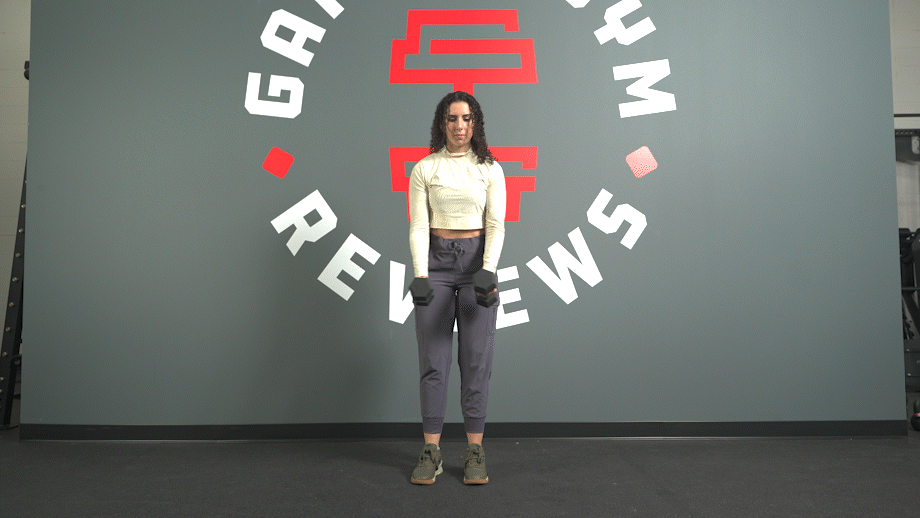
Rope or Band Pull-Apart
Why it’s great: Cable machines feature dynamic resistance, which will be different from the static resistance produced by the other trap exercises on our list that use free weights. If you don’t happen to have a cable machine, a resistance band makes a great substitute.
How to do it:
- Set the cable machine at shoulder height and fasten the rope attachment. If using a resistance band, wrap it around a sturdy anchor point also around shoulder height.
- Grab on using an overhand grip, then back up until your arms are extended.
- Pull the handles back toward your face, splitting the handles to either side of your face and squeezing your shoulder blades at the end of the movement.
- Slowly return to the starting position.
- Repeat as needed.
RELATED: The Best Cable Machines

FAQs: Trap Exercises
Are trap exercises safe for your neck?
The trapezius muscle covers a portion of the neck, so there has been some concern over whether or not targeting the traps will have an adverse effect on your neck.
Rest assured, trap exercises are totally safe for your neck, provided you’re controlling the movements, practicing good technique, and performing everything with proper form. We recommend starting out with light weights while you learn the form, then scaling to progressively heavier weight as you become more proficient.
Consider working with a certified personal trainer or other fitness professional if you’re not confident with your form, need a professional opinion, or want personalized advice regarding your fitness.
Why does my neck hurt after doing trap exercises?
A great trap workout will result in post-exercise soreness of the trapezius and other adjacent muscle groups, but your neck should not be in pain. The pain may be a result of:
Poor form
Jerky movements
Weight that is too heavy
Overuse
Consider working with a certified personal trainer or other fitness professional for help perfecting your form and other personalized advice. If the neck pain persists, stop exercising immediately and consult a medical professional.
Are trap exercises necessary?
Unless you’re training to compete in bodybuilding events, trap exercises aren’t totally imperative. It may be worth it to strengthen the trapezius muscle anyway though, given the muscle’s primary role.
Activities like lifting, pulling, and carrying heavy weights become easier if your traps are strong. Plus, your traps assist in neck movement, and you’re very likely to be moving your neck around for the rest of your life, regardless of your current fitness level or athletic abilities.
Why are trap muscles important?
The traps look great, but what do they actually do?
Functionally, they’re involved in stabilizing the shoulder girdle and maintaining proper scapular alignment and movement. They also contribute to neck movement, meaning you’ll want strong traps to ensure good neck mobility.
Beyond their postural contributions, the traps assist in movements like lifting and pulling objects, rotating the arms, raising and lowering the shoulders, and more. While useful for athletic activities, everyday tasks rely on the trapezius muscles as well.
Basically, you don’t need to be a bodybuilder or competitive athlete to enjoy the perks of strong trap muscles. Training your trapezius muscles yields many benefits in the gym, on the playing field, and in everyday life.
References
1. Ourieff J, Scheckel B, Agarwal A. Anatomy, Back, Trapezius. In: StatPearls. Treasure Island (FL): StatPearls Publishing; March 11, 2023.
Further reading

Trying to follow a healthier lifestyle without breaking the bank? In this article, we’ll show you how to eat healthy on a budget. Read more

In this Transparent Labs LEAN review, we tested out and rated our experience using this pre-workout that also doubles as a fat burner. Read more

Our Manitoba Harvest Hemp Protein Powder review covers everything you need to know about this popular hemp protein, straight from our nutrition experts! Read more

You may have heard the rumors, but, does creatine cause hair loss? Here, we look at the science to debunk this common misconception. Read more

